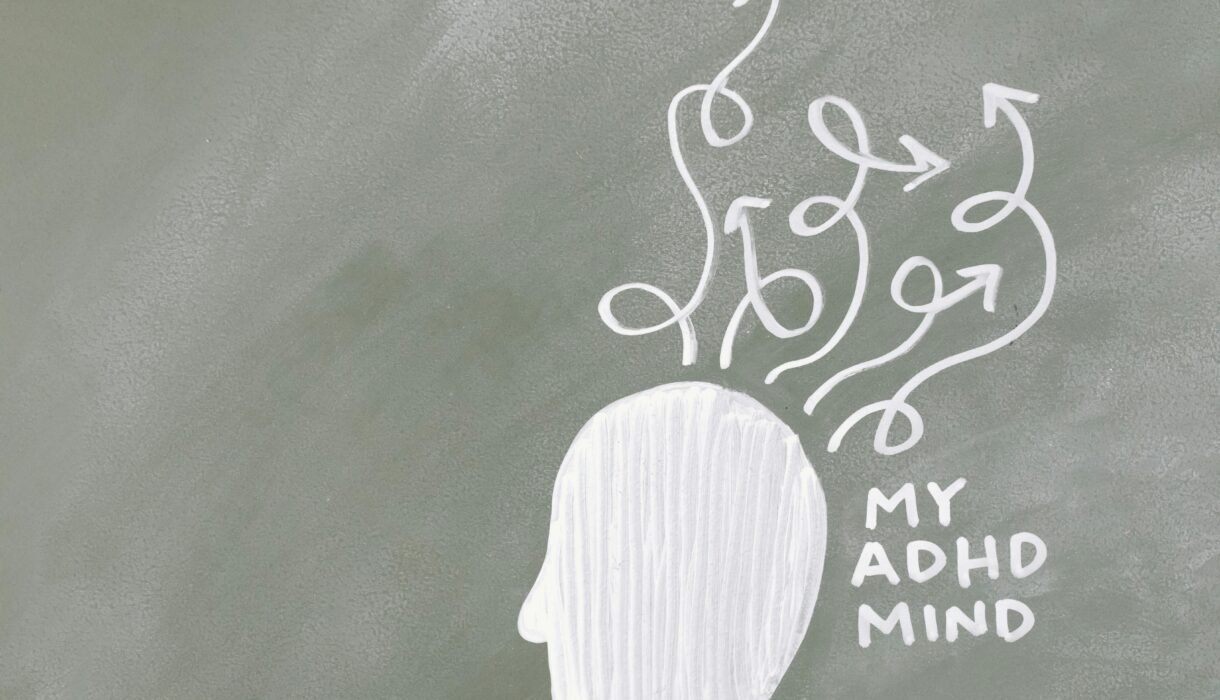
Stop the Money Chaos ADHD Budgeting Made Simple
Posted in :
Managing money and ADHD budgeting can be tough. It’s hard to keep track of spending, follow a budget, and resist buying things on impulse. It feels like you’re always trying to catch up, but you keep falling behind.
You are not alone. Lots of people with ADHD struggle with money. But, there are practical, effective budgeting tips made just for you. With the right strategies, you can manage your money better and reach financial stability.
Key Takeaways
- Simple, actionable budgeting tips tailored for ADHDHD individuals
- Effective strategies to manage expenses and avoid impulse buys
- Practical advice on creating a personalized budget plan
- Techniques to stay on track and achieve financial goals
- Tools and resources to support your financial journey
Why Traditional Budgeting Methods Often Fail for ADHD Brains
Managing money can be tough for people with ADHD. They often get frustrated with old-school budgeting ways. ADHD makes it hard to follow traditional financial plans because of impulsivity, disorganization, and trouble focusing.
The Executive Function Challenge
Executive function deficits are a big reason why old budgeting methods don’t work for ADHD brains. Executive functions are high-level skills like planning, organizing, and managing time. People with ADHD find these skills hard, making budgeting and tracking money very tough.
Here’s a table showing how executive function affects money management:
| Executive Function | Traditional Budgeting Requirement | Challenge for ADHD Brains |
|---|---|---|
| Planning | Creating a budget plan | Difficulty in setting realistic financial goals |
| Organization | Categorizing expenses | Struggling to maintain categories and track expenses |
| Time Management | Regularly updating budget records | Forgetting to log transactions or missing deadlines |
| Self-Regulation | Sticking to the budget | Impulsive spending or emotional financial decisions |
When Consistency Becomes the Enemy
Traditional budgeting stresses the need for consistency. But for those with ADHD, sticking too closely to a budget can backfire. The same old budgeting tasks can get boring and frustrating, leading to giving up.
Trying to keep up with consistency can also add stress. This stress makes managing money even harder for people with ADHD.
The Emotional Relationship with Money
People with ADHD often have a complicated emotional tie to money. This is due to impulsivity, mood swings, and past money issues. This emotional link makes it hard to make smart money choices using old budgeting methods.
It’s key to understand and work on this emotional connection. This way, we can create better, more personal ways to manage money for those with ADHD.
Understanding Your ADHD Money Relationship
For people with ADHD, dealing with money is complex. It’s not just about being good or bad with money. It’s about facing unique challenges and finding opportunities in managing finances with ADHD.
Impulsive Spending Patterns
You might make impulse buys, not because you need them, but to cope with stress or boredom. This can cause financial problems and clutter in your home.
To control impulsive spending, try waiting 30 days before buying non-essential items. This can help you decide if you really need something or if it’s just a fleeting want.
Hyperfocus vs. Financial Neglect
Your ADHD might make you hyperfocus on some things, ignoring others like finances. Or, you might struggle to stay focused on budgeting and planning, leading to neglect.
To find a balance, set aside specific times each week for financial tasks. Use a planner or app to schedule these times, so you don’t forget about your finances.
Identifying Your Personal Financial Triggers
It’s important to know what triggers your financial decisions. Do you spend more when stressed, bored, or happy? Knowing these triggers can help you manage your spending better.
Keep a spending journal to track your purchases and why you made them. This can give you insights into your spending habits and help you improve.
Engage in a hobby or activity that you enjoy
| Financial Trigger | Common Reaction | Alternative Strategy |
|---|---|---|
| Stress | Impulse buying | Practice relaxation techniques like deep breathing or meditation |
| Boredom | Mindless shopping online | |
| Celebration | Splurging on luxuries | Set a “celebration budget” and stick to it |
By understanding your ADHD money relationship and using strategies to manage your finances, you can aim for a more stable and less stressful financial future.
ADHD Budgeting: A Neurodivergent Approach
Using a neurodivergent approach to budgeting can change how you handle money. It’s about understanding your ADHD brain and using its strengths. This way, you can make a budget that works well and lasts.
Working With Your Brain, Not Against It
Traditional budgeting doesn’t work for people with ADHD. It’s made for brains that are different from yours. So, it’s key to work with your brain’s special traits, not against them.
Identify your financial strengths: Are you good at finding deals or planning for the long term? Focus on what you’re naturally good at.
Strengths-Based Financial Planning
Instead of trying to fix what’s weak, build on what’s strong. If you’re better at short-term planning but struggle with long-term goals, make a system that uses your strength.
- Use budgeting tools for ADHD that fit your style, like apps, spreadsheets, or visual aids.
- Have a financial planning for ADHD plan that breaks big goals into smaller tasks.
- Always celebrate your wins, no matter how small, to stay motivated.
By taking a neurodivergent approach to budgeting, you’re not just managing money. You’re empowering yourself to reach financial stability and success.
The Dopamine-Driven Approach to Financial Management
Imagine a system that makes managing money fun for your ADHD brain. It uses dopamine to make budgeting rewarding. This method makes the process enjoyable, not just another task.
Creating Reward Systems That Actually Work
To make money management fun, you need a reward system. It should celebrate your successes. Here are a few ideas:
- Treat yourself to a favorite meal after saving a certain amount
- Set aside time for a hobby or activity you love
- Use a budgeting app that tracks your progress and gives rewards
Remember,
“You don’t have to be great to start, but you have to start to be great.”
This mindset is key to creating a rewarding system.
Gamification Techniques for Money Management
Gamifying your finances can make it more fun. Try these techniques:
- Turn savings goals into a game by setting challenges or competing with a friend
- Use apps with gamification features, like points or leaderboards
- Make a visual chart or graph to track your progress
By making it competitive or visually appealing, you’ll stay motivated to follow your budget.
Celebrating Small Financial Wins
Celebrating small victories is key to keeping momentum. Acknowledge every success, no matter how small. This boosts your morale and motivation. As “Success is the sum of small efforts, repeated day in and day out.” This is true for your financial journey too.
By using a dopamine-driven approach, you can enjoy managing your finances. This not only helps with ADHD but also helps you reach your financial goals.
Visual Budgeting Strategies for Visual Thinkers
Visual budgeting strategies can change how people with ADHD handle money. Visual thinkers find it easier to understand complex financial info with visual aids. This makes managing money simpler and more fun.

Color-Coding Your Financial Life
Color-coding your money is a great way to start. Use different colors for different budget categories or goals. For example, red for bills, green for savings, and blue for fun money.
- Expenses: Pick one color for things you must pay every month, like rent and bills.
- Savings: Use another color for your savings goals, like a vacation or emergency fund.
- Income: Choose a special color for money coming in, making it easy to see your income.
Creating Visual Money Maps
Visual money maps give a clear picture of your finances. You can use charts, diagrams, or digital tools to show money coming and going. This helps spot spending patterns and ways to save more.
| Category | Budgeted Amount | Actual Spending |
|---|---|---|
| Groceries | $500 | $475 |
| Entertainment | $200 | $225 |
| Utilities | $150 | $150 |
Using these visual budgeting methods, people with ADHD can handle their money better. They can reduce stress and reach their financial goals more easily.
Technology That Does the Heavy Lifting
Using technology can change how you manage money with ADHD. The right tools can make it easier, reduce stress, and help your finances.
Apps Designed with ADHD in Mind
Many apps are made to help people with ADHD handle their money better. Some top ones are:
- Mint: It tracks your spending, makes a budget, and sets financial goals.
- You Need a Budget (YNAB): This app assigns jobs to every dollar, helping you use your money wisely.
- Digit: It saves money for you by moving small amounts from your checking to savings.
These adhd budgeting apps are easy to use and meet the needs of people with ADHD. They offer features like automatic savings, bill tracking, and investment monitoring.
Automation: Set It and Forget It
Automation helps manage your money without constant checking. It sets up automatic transfers for savings, investments, and bills. This way, you meet your financial duties on time, every time.
- Automated Savings: Set up automatic transfers to your savings or investment accounts to build wealth over time.
- Bill Payments: Automate your bill payments to avoid late fees and penalties.
Using finance management tools with automation can lessen the stress of managing money. It lets you focus on other important things in your life.
Notification Systems That Actually Help
Notification systems are great for managing money, giving you timely reminders and updates. Look for adhd money management apps with customizable notifications to keep you on track with your money.
- Transaction Alerts: Get notifications for every transaction, keeping you aware of your spending in real-time.
- Bill Due Reminders: Get reminders when bills are due, so you never miss a payment.
- Budget Alerts: Set alerts when you’re approaching or have exceeded your budget limits in various categories.
By using these tech solutions, you can build a strong financial management system. It will help you reach your financial goals more easily.
The Two-Account System: A Game-Changer for ADHD Money Management
By splitting your finances into two separate accounts, managing money with ADHD gets easier. This method helps keep your spending and bills separate. It makes it simpler to follow your budget.

Separating Spending from Bills
The two-account system divides your income into two parts. One is for bills and essential costs, and the other for fun money. This way, you can focus on what you need while still enjoying some free time.
- Bill Account: Use this account for rent, utilities, groceries, and other essential expenses.
- Spending Account: Allocate funds for entertainment, hobbies, and personal treats.
How to Implement Without Overwhelm
To start the two-account system without stress, follow these steps:
- First, check your current financial situation.
- Then, set clear financial goals.
- Finally, split your income into the two accounts based on your needs and priorities.
| Account Type | Purpose | Example Expenses |
|---|---|---|
| Bill Account | Essential Expenses | Rent, Utilities, Groceries |
| Spending Account | Discretionary Spending | Dining Out, Entertainment, Hobbies |
Building in Financial Guardrails
To protect your money even more, add some financial guardrails. These include:
- Automating bill payments.
- Setting budget alerts.
- Regularly checking your financial progress.
By using the two-account system and these guardrails, you can make a strong ADHD budget planner. It will help you manage your money better.
Micro-Budgeting: When Traditional Monthly Budgets Don’t Stick
Managing money with ADHD can be tough. Micro-budgeting is a flexible way to handle finances. It breaks down budgeting into smaller chunks, like weekly or daily budgets.
Weekly and Even Daily Money Management
Shorter time frames make budgeting easier. You can adjust your spending to fit your needs and goals. For example, you might budget weekly, changing it as your schedule or expenses change.
Daily money management is even more detailed. It lets you make financial choices every day.
The Power of Immediate Feedback Loops
Getting feedback right away is key for ADHD. It keeps you focused and informed about your money choices. Digital tools or apps that update your spending in real-time are very helpful.
This feedback loop lets you adjust your budget quickly. It makes managing money more dynamic and responsive.
Cash Envelope Systems Reimagined for ADHD
The cash envelope system can be made more engaging for ADHD. Adding visual and tactile elements can make it more effective. For example, using colored or textured envelopes for different expenses helps stay organized.
You can mix digital and physical systems to fit your needs. This makes budgeting more enjoyable and effective.
Body Doubling and Accountability Partners for Financial Success
One of the best ways to manage ADHD finances is to find an accountability partner or use body doubling. This method uses community and support to keep you on track with your money goals.
Finding Your Financial Accountability Buddy
An accountability buddy can be a friend, family member, or professional coach who gets your ADHD. They should be supportive, reliable, and check in often. This partnership can give you the push you need to follow your financial plan.
To find the right buddy, look for ADHD support groups or online forums. You can also ask your financial advisor or therapist for suggestions.
Structured Check-ins That Actually Happen
Regular meetings are key to keeping up with your financial goals. Set up weekly or bi-weekly meetings with your buddy to review progress, talk about challenges, and set new goals. Use a shared calendar to mark these and set reminders.
During these meetings, celebrate your wins, no matter how small, and tackle any setbacks. This structured approach keeps you focused and motivated.
Virtual Money Management Sessions
Virtual money management sessions are now common and effective. Use video calls for regular financial check-ins with your buddy. This way, you can keep up with your financial goals from anywhere, anytime.
To get the most out of these sessions, prepare by gathering all your financial documents and having a clear plan. This helps you stay on track and cover all important financial aspects.
By adding body doubling and accountability partners to your financial strategy, you can greatly improve your financial stability and success.
Emergency Strategies: When Hyperfocus or Distraction Derails Your Budget
For people with ADHD, keeping a budget can be hard. It’s like walking a tightrope between staying focused and getting distracted. Having emergency plans can help you stay on track when things go wrong.
Creating Financial Circuit Breakers
Financial circuit breakers are tools to stop overspending or bad money habits early. One good way to make one is by setting up automatic savings transfers. Or, you can use the two-account system talked about before.
To make financial circuit breakers work:
- Set clear spending limits that you won’t cross without checking first.
- Use tech to pause or limit spending.
- Have a ‘cooling off’ period for non-essential buys.
Recovery Plans That Don’t Shame
Recovery plans are about gently getting back on track, not punishing yourself. A kind recovery plan includes:
Revisiting Budget Goals
| Strategy | Description |
|---|---|
| Adjust your budget to better fit your current needs. | |
| Seeking Support | Ask your financial buddy or a trusted friend for help. |
| Learning from the Experience | Figure out what went wrong and how to avoid it next time. |
With these emergency strategies, you can handle ADHD and budgeting better. You’ll feel more confident and resilient.
Simplifying Without Sacrificing: Minimalist ADHD Budgeting
ADHD budgeting doesn’t have to be hard. A minimalist approach can make your finances easier to manage. It helps you focus on what’s truly important, creating a budget that works for you.
Minimalist budgeting means cutting out the unnecessary and keeping only the essentials. For those with ADHD, this method is especially helpful. It makes things simpler and easier to handle.
The One-Number Budget Approach
The one-number budget focuses on just one financial goal. This could be your savings rate, total debt, or monthly expenses. By focusing on one key number, managing your finances becomes simpler.
For example, focusing on your savings rate lets you set a target percentage of income to save each month. This makes saving a regular habit and reduces the stress of handling many financial tasks.
| Financial Metric | Target | Actual |
|---|---|---|
| Savings Rate | 20% | 18% |
| Total Debt | $5,000 | $5,500 |
| Monthly Expenses | $3,000 | $3,200 |
Eliminating Decision Fatigue
Decision fatigue is a big challenge for those with ADHD. Automating routine financial decisions can lessen mental strain and prevent impulsive spending.
For example, setting up automatic transfers for savings and bills means these tasks are done on time without needing constant decisions.
- Set up automatic bill payments
- Automate savings transfers
- Use autopilot for investments
Automating Savings and Investments
Automating savings and investments is key to minimalist budgeting. It ensures you’re always moving towards your financial goals without extra effort.
Use apps or tools to set up automatic transfers based on your pay schedule or financial goals. This way, you can grow your wealth with little effort.
By using minimalist budgeting, you can make managing your finances simpler, reduce stress, and reach your financial goals more easily.
Conclusion: Your Neurodivergent Financial Future
You now have the tools and strategies to manage your money better. By understanding your unique money relationship, you can plan your finances in a way that suits you. This will help you build a financial future that supports your needs.
Embracing your neurodiversity can lead to financial empowerment. Use technology, visual budgeting, and reward systems to help you. Celebrate your small financial wins and don’t get discouraged by setbacks. They’re chances to practice your emergency strategies and get back on track.
With persistence and the right approach, you can achieve a brighter financial future. Start working towards financial stability and freedom today.
FAQ
What are some effective budgeting strategies for individuals with ADHD?
People with ADHD can use several budgeting strategies. The two-account system, micro-budgeting, and visual budgeting are good options. These methods make managing money easier and more fun.
How can technology assist with ADHD financial management?
Technology is very helpful for managing money with ADHD. Apps made for ADHD, automation, and reminders can make tasks easier. This reduces stress and makes managing money simpler.
What is the dopamine-driven approach to financial management, and how can it help?
The dopamine-driven approach uses rewards and games to make managing money fun. It helps people with ADHD stay interested and motivated. Celebrating small wins makes it rewarding.
How can I simplify my financial management without sacrificing financial health?
To simplify money management, try minimalist budgeting. The one-number budget and automating savings are good starts. These steps reduce stress and keep your finances healthy.
What is body doubling, and how can it support financial success?
Body doubling means having someone to help with money management. It includes regular check-ins and virtual sessions. This adds motivation and support.
How can I recover from financial setbacks caused by hyperfocus or distraction?
To bounce back from money problems, use financial circuit breakers. Create plans that are kind, not harsh. This helps you get back on track without feeling bad.
What are some benefits of using a visual budgeting approach?
Visual budgeting, like using colors and maps, is great for visual thinkers. It makes managing money more accessible and fun.
How can I implement the two-account system without feeling overwhelmed?
To start the two-account system, separate spending from bills. Add financial rules to help. Start small to avoid feeling overwhelmed.

